Switzerland: Views From The Glacier Express
Mar 5, 2021 15:00:46 #
The Glacier Express (GEX) is an "express" train connecting railway stations of the two major mountain resorts of Zermatt and St. Moritz via Andermatt in the central Swiss Alps. The train is not an "express" in the sense of being a high-speed train, but rather, in the sense that it provides a one-seat ride for an 8-hours-long end-to-end 291 km (181 mi) journey, and omits stops made by local trains. The Glacier Express is known as the slowest express train in the world. As St. Moritz and Zermatt are home to two well-known mountains, the Glacier Express is also said to travel from Matterhorn to Piz Bernina.
The journey from Zermatt starts at the dead end of an Alpine valley, the Mattertal, just below the world-renowned Matterhorn at an elevation of 1,606 m (5,269 ft) before it descends to the huge valley of the Valais in Brig. It traverses the 291-kilometre-long (181 mi) journey through the center of the Swiss Alps, over 291 bridges, through 91 tunnels, such as the 15.4 km-long (9.6 mi) Furka Tunnel at an elevation of 1,500 m (4,900 ft) to circumvent the Furka Pass, makes an intermediate stop at Andermatt on a secluded high Alpine valley, just to traverse its highest point on the Oberalp Pass at 2,033 m (6,670 ft) in order to descend to its lowest point at Chur at 585 m (1,919 ft). From Chur, the capital of the canton of Graubünden, the GEX backtracks to higher altitudes again in order to reach the resort St. Moritz in a further valley to the south. Previously, before traversing the Albula Range by a tunnel at 1,800 metres (5,900 ft), in Filisur travelers can change to a connecting train to reach Davos to the east.
Since 2017 the train is operated by the Glacier Express AG, a cooperation jointly owned by the former operators Matterhorn Gotthard Bahn (MGB) and Rhaetian Railway (RhB). For much of its journey, it also passes along and through the World Heritage Site known as the Rhaetian Railway in the Albula / Bernina Landscapes.
The first Glacier Express started on 30 June 1930 07:30 in Zermatt. Initially, it was operated by three railway companies: the Visp-Zermatt-Bahn (VZ), the Furka Oberalp Bahn (FO), and the RhB. Since 2003, the train has been operated by RhB and the MGB, which arose from a merger between the BVZ and the FO. Since 2017 the Glacier Express AG, owned by the two former operators, runs the train of the same name.
The entire line is metre gauge (narrow gauge railway), and 23.9 km-large (14.9 mi) portion of it use a rack-and-pinion system both for ascending steep grades and to control descent.
The completion of the final portion of the FO in 1926 opened up the Cantons of Valais and Graubünden to further tourist development. In particular, a pathway was laid for the introduction of Kurswagen (through coaches) between Brig and Chur, and between Brig and St. Moritz.
In early June 1930, the then Visp–Zermatt Bahn was extended to Brig by the opening of a metre gauge line along the Rhone Valley between Visp and Brig. For the first time, it was feasible to operate through coaches all the way from Zermatt to St. Moritz and return. On 25 June 1930, the first train of such coaches set out from Zermatt to St. Moritz, under the name Glacier Express. The new train's name honoured the Rhone Glacier, which is near Gletsch, on the Furka Pass.
Until 1982, the Glacier Express operated only in the summer months, because the Furka Pass and the Oberalp Pass were both snowed over in winter. Initially, the train was made up of first to third class salon and passenger coaches, supplied by all three of the participating railway companies. Between Chur and Disentis/Mustér, passengers could enjoy a hot lunch in a Mitropa dining car. From 1933, the Glacier Express through coaches were attached to normal passenger trains between Brig and Zermatt.
In the earliest years of the Glacier Express, electric locomotives were used to haul the Glacier Express on the BVZ and the RhB, but steam locomotives were used on the FO. That changed in 1941-1942, when overhead catenary was installed on the FO, enabling completely electric operation for the full length of the route. However, no through trains were operated between 1943 and 1946, due to World War II.
Upon the resumption of daily through trains in 1948, the dining car service was extended from Disentis/Mustér to the top of the Oberalp Pass. Between the 1950s and the 1970s, both the BVZ and the RhB introduced new locomotive classes that, when attached to the Glacier Express, enabled reductions in schedule times. Meanwhile, the dining car service was extended further, to Andermat.
In 1985 the Glacier Express timetable was completely revised. Between 1986 and 1993, the BVZ and the FO invested nearly 40 million Swiss francs in constructing 18 new first class panorama cars for the train.[3] By 2005 more than 250000 passengers were travelling on the Glacier Express each year.
In 2006 a few scenes of the documentary film The Alps were shot inside the train, and further new panorama cars were added to the Glacier Express passenger car fleet. On 7 July 2008, the Albula Railway and the Bernina Railway were jointly recorded in the list of UNESCO World Heritage Sites, under the name Rhaetian Railway in the Albula / Bernina Landscapes. Currently, the Glacier Express is especially popular with tourists from Germany, Japan, and, increasingly, India.
For a detailed description of the entire route, please see :https://en.wikipedia.org/wiki/Glacier_Express
We boarded the Glacier Express in St. Moritz (which I'll post in the future) for our journey across the alps to Interlaken and the Jungfraujoch ( see my previous posts). We had a private observation car for our tour group which fortunately was the last car in the train so I could take pictures of the beautiful landscapes we passed from the rear window as well as get shots of the front of the train through the side windows. I hope you enjoy these images which were all taken from the train.
Mark
The journey from Zermatt starts at the dead end of an Alpine valley, the Mattertal, just below the world-renowned Matterhorn at an elevation of 1,606 m (5,269 ft) before it descends to the huge valley of the Valais in Brig. It traverses the 291-kilometre-long (181 mi) journey through the center of the Swiss Alps, over 291 bridges, through 91 tunnels, such as the 15.4 km-long (9.6 mi) Furka Tunnel at an elevation of 1,500 m (4,900 ft) to circumvent the Furka Pass, makes an intermediate stop at Andermatt on a secluded high Alpine valley, just to traverse its highest point on the Oberalp Pass at 2,033 m (6,670 ft) in order to descend to its lowest point at Chur at 585 m (1,919 ft). From Chur, the capital of the canton of Graubünden, the GEX backtracks to higher altitudes again in order to reach the resort St. Moritz in a further valley to the south. Previously, before traversing the Albula Range by a tunnel at 1,800 metres (5,900 ft), in Filisur travelers can change to a connecting train to reach Davos to the east.
Since 2017 the train is operated by the Glacier Express AG, a cooperation jointly owned by the former operators Matterhorn Gotthard Bahn (MGB) and Rhaetian Railway (RhB). For much of its journey, it also passes along and through the World Heritage Site known as the Rhaetian Railway in the Albula / Bernina Landscapes.
The first Glacier Express started on 30 June 1930 07:30 in Zermatt. Initially, it was operated by three railway companies: the Visp-Zermatt-Bahn (VZ), the Furka Oberalp Bahn (FO), and the RhB. Since 2003, the train has been operated by RhB and the MGB, which arose from a merger between the BVZ and the FO. Since 2017 the Glacier Express AG, owned by the two former operators, runs the train of the same name.
The entire line is metre gauge (narrow gauge railway), and 23.9 km-large (14.9 mi) portion of it use a rack-and-pinion system both for ascending steep grades and to control descent.
The completion of the final portion of the FO in 1926 opened up the Cantons of Valais and Graubünden to further tourist development. In particular, a pathway was laid for the introduction of Kurswagen (through coaches) between Brig and Chur, and between Brig and St. Moritz.
In early June 1930, the then Visp–Zermatt Bahn was extended to Brig by the opening of a metre gauge line along the Rhone Valley between Visp and Brig. For the first time, it was feasible to operate through coaches all the way from Zermatt to St. Moritz and return. On 25 June 1930, the first train of such coaches set out from Zermatt to St. Moritz, under the name Glacier Express. The new train's name honoured the Rhone Glacier, which is near Gletsch, on the Furka Pass.
Until 1982, the Glacier Express operated only in the summer months, because the Furka Pass and the Oberalp Pass were both snowed over in winter. Initially, the train was made up of first to third class salon and passenger coaches, supplied by all three of the participating railway companies. Between Chur and Disentis/Mustér, passengers could enjoy a hot lunch in a Mitropa dining car. From 1933, the Glacier Express through coaches were attached to normal passenger trains between Brig and Zermatt.
In the earliest years of the Glacier Express, electric locomotives were used to haul the Glacier Express on the BVZ and the RhB, but steam locomotives were used on the FO. That changed in 1941-1942, when overhead catenary was installed on the FO, enabling completely electric operation for the full length of the route. However, no through trains were operated between 1943 and 1946, due to World War II.
Upon the resumption of daily through trains in 1948, the dining car service was extended from Disentis/Mustér to the top of the Oberalp Pass. Between the 1950s and the 1970s, both the BVZ and the RhB introduced new locomotive classes that, when attached to the Glacier Express, enabled reductions in schedule times. Meanwhile, the dining car service was extended further, to Andermat.
In 1985 the Glacier Express timetable was completely revised. Between 1986 and 1993, the BVZ and the FO invested nearly 40 million Swiss francs in constructing 18 new first class panorama cars for the train.[3] By 2005 more than 250000 passengers were travelling on the Glacier Express each year.
In 2006 a few scenes of the documentary film The Alps were shot inside the train, and further new panorama cars were added to the Glacier Express passenger car fleet. On 7 July 2008, the Albula Railway and the Bernina Railway were jointly recorded in the list of UNESCO World Heritage Sites, under the name Rhaetian Railway in the Albula / Bernina Landscapes. Currently, the Glacier Express is especially popular with tourists from Germany, Japan, and, increasingly, India.
For a detailed description of the entire route, please see :https://en.wikipedia.org/wiki/Glacier_Express
We boarded the Glacier Express in St. Moritz (which I'll post in the future) for our journey across the alps to Interlaken and the Jungfraujoch ( see my previous posts). We had a private observation car for our tour group which fortunately was the last car in the train so I could take pictures of the beautiful landscapes we passed from the rear window as well as get shots of the front of the train through the side windows. I hope you enjoy these images which were all taken from the train.
Mark
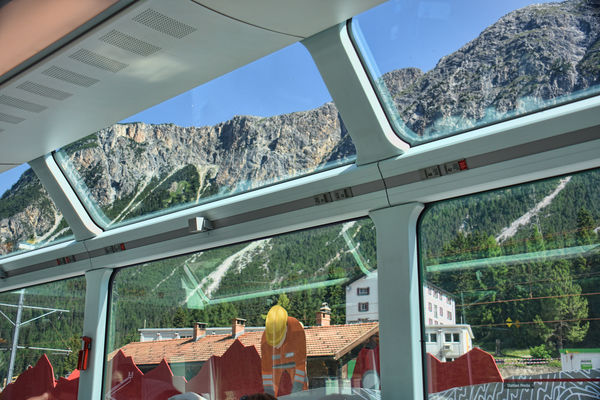
(Download)
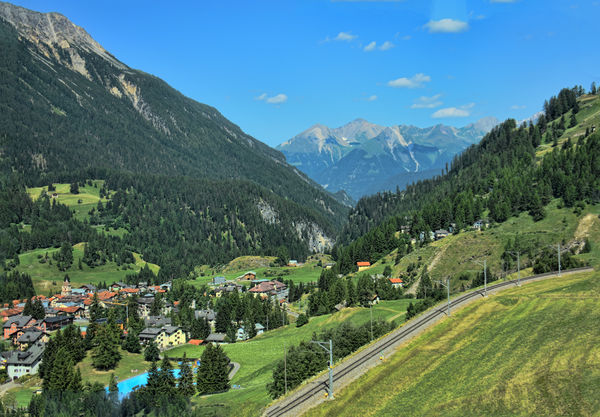
(Download)
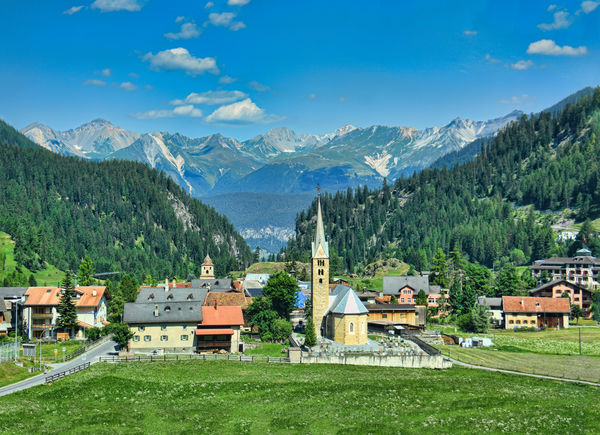
(Download)
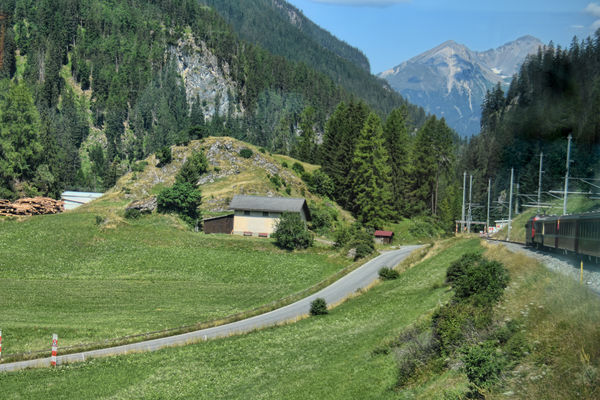
(Download)
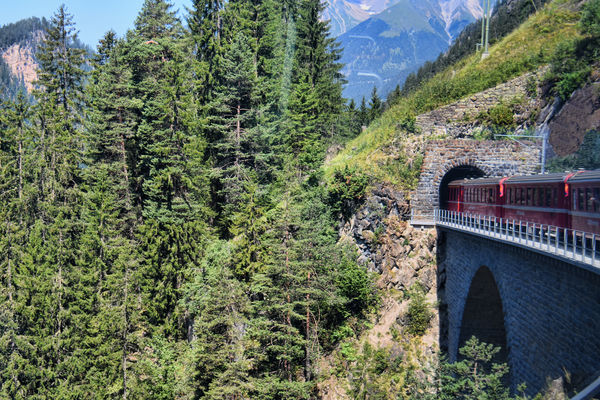
(Download)
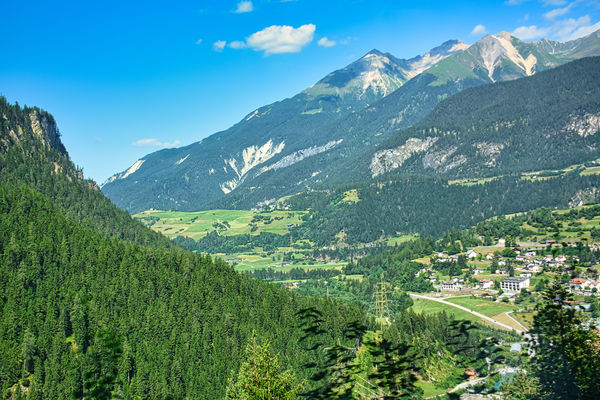
(Download)
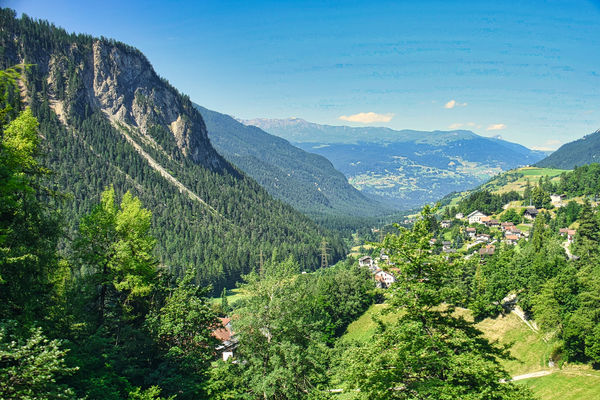
(Download)
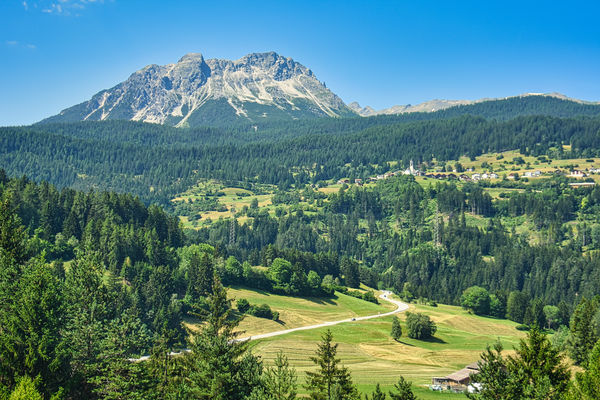
(Download)
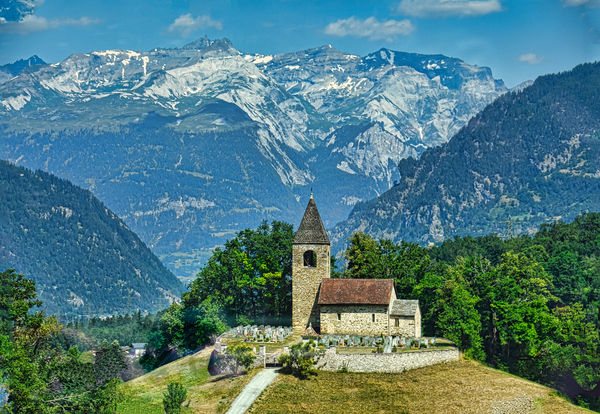
(Download)
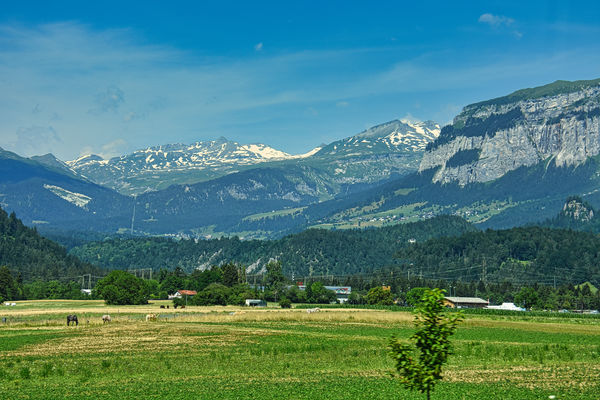
(Download)
Mar 5, 2021 15:02:28 #
Mar 5, 2021 15:05:18 #
Mar 5, 2021 15:07:44 #
srfmhg wrote:
The Glacier Express (GEX) is an "express"... (show quote)
Marvelous images. We took the Glacier Express in 2003 from Zermatt to St Moritz and a final connection to Zurich. Quite an experience.
We were younger then, and when we walked up to the train, the Mucho Pomposio Conductor looked down his nose and said, "zis is de Glacier Express. Reservations are required."
I reached into my somewhat scruffy backpack and, with a flourish, pulled out our tickets and handed them over.
I got an "ach zo," and we boarded the train.
Mar 5, 2021 15:09:12 #
Mar 5, 2021 15:09:15 #
Longshadow wrote:

That has to be a totally amazing ride!


That has to be a totally amazing ride!

Thanks very much Bill. It was a great ride!
Mar 5, 2021 15:09:55 #
UTMike wrote:
Wonderful combination of photos and interesting information, Mark!
Thanks so much Mike. So pleased that you liked both.
Mar 5, 2021 15:11:43 #
rgrenaderphoto wrote:
Marvelous images. We took the Glacier Express in ... (show quote)
Great story! So glad that these images brought back pleasant memories. Thanks for your kind comments.
Mar 5, 2021 15:12:13 #
Bob Mevis wrote:
A wonderful series and info.
Thanks very much Bob. I appreciate!
Mar 5, 2021 15:12:30 #
Mar 5, 2021 15:19:43 #
All aboard! Great images of beautiful countryside from a nostalgic and romantic platform. I wanna go!
Mar 5, 2021 16:31:55 #
Another gorgeous selection of images with an excellent and informative narrative. Thanks for sharing.
Mar 5, 2021 16:53:18 #
Mar 5, 2021 17:08:42 #
srfmhg wrote:
The Glacier Express (GEX) is an "express"... (show quote)
My first thought was one word: WOW! This is one of your best sets yet Mark. When we spent the summer of 1973 riding all over Europe on the train, we had read that the ride from Oslo to Bergen Norway was the most beautiful in Europe, and it was the best we took. This one certainly rivals it. I'm looking forward to your future posts. Interesting narrative too.
Mar 5, 2021 18:20:34 #
kpmac wrote:
Awesome, Mark. A slow train is a good train in this case.
Thanks so much Ken. I couldn't agree more!
If you want to reply, then register here. Registration is free and your account is created instantly, so you can post right away.







